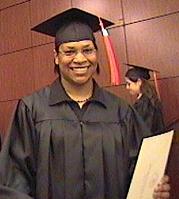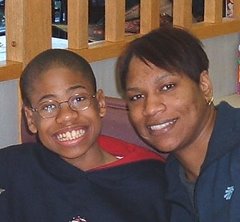By Dan Olmsted
UPI Senior Editor
A Columbia University scientist plans to test whether gold salts improve the functioning of "autistic mice" -- a step toward finding whether they could help children with autism.
Dr. Mady Hornig of Columbia's Mailman School of Public Health will give the compound to mice that have been bred to be susceptible to thimerosal, a mercury-based preservative in children's immunizations until recently. Some researchers and parents believe thimerosal is implicated in the explosion of autism diagnoses over the past decade, though federal health authorities say that theory has been discredited.
In previous research, Hornig found that the susceptible mouse breed shows autistic-like behaviors, including self-mutilation, when given thimerosal at doses proportionate to those children received until recently.
Hornig "is developing a treatment protocol using gold salts which she will administer to these genetically susceptible mice to determine if the treatment might improve their behavior and brain function and if there are side effects," according to an announcement of the project by the National Autism Association.
"Gold tightly binds mercury and there are anecdotal reports of gold salts being effective in improving autism outcomes."
That is a reference to Age of Autism's report last year that the first person ever diagnosed with the disorder improved significantly after treatment with gold salts. That child, known as Donald T., was given the compound to treat a life-threatening attack of juvenile arthritis in 1946, when he was 12 years old.
According to Donald's brother, interviewed in the small Mississippi town where both still live, the treatment cleared up the arthritis -- and his autism improved markedly and unexpectedly as well.
"When he was finally released (from the Campbell Clinic in Memphis), the nervous condition he was formerly afflicted with was gone," his brother said. "The proclivity to excitability and extreme nervousness had all but cleared up."
Donald became "more social," the brother said. He went on to graduate from college, where he belonged to a fraternity; worked at a bank; lives on his own; and now, in retirement, travels the world and plays a good game of golf.
That information caught the attention of autism researchers who believe the disorder might result from a toxic exposure in utero or in infancy, possibly the mercury that was used in vaccines as early as 1931 (Donald was born in 1933).
One such scientist, chemistry professor Boyd Haley of the University of Kentucky, did a laboratory experiment in December to see if gold salts had any effect on mercury.
They did, reversing the binding of mercury to molecules. "This does lend support to the possible removal of mercury from biological proteins in individuals treated with gold salts," Haley said.
Gold salts acting on mercury is not the only way they might theoretically help a person with autism. Some researchers believe autism is an autoimmune condition, in which the immune system begins to attack the body.
Juvenile rheumatoid arthritis, the ailment Donald had at age 12, is such a condition; gold salts were used to treat it because they somehow calm the inflammatory autoimmune attack. If the same process is happening in the brains of autistic children, gold salts might ameliorate it in the same way.
Researchers caution that gold salts should not be tried as a treatment for autism because of the risk of severe side effects and lack of data about its effectiveness.
Hornig said she was moved to begin the study by the death of Liz Birt, an advocate for children with autism who died in a car crash in December. Birt was a co-founder of SafeMinds, a group that urges the removal of mercury from all medical products. SafeMinds is sponsoring the study and soliciting donations in Birt's memory.
Details of the project, called Go for the Gold, can be found at www.nationalautismassociation.org.
--
E-mail: dolmsted@upi.com
© Copyright 2006 United Press International, Inc. All Rights Reserved
Article used here with permission.
For more information, resources and practical strategies on autism visit: www.AutismConcepts.com.
Forget what you haven't heard… Family site shares news, resources, announcements and free or low-cost ways to help us manage day-to-day living with autism.
Crystal Brown

About Me

- Crystal
- AutismConcepts.com and Child-Autism-Parent-Cafe.com share a large collection of useful autism information, resources, and how-to articles written by authors who are touched by autism, offering practical solutions to families. Particularly minority and underserved families and caregivers who may not know what to do or where to go for help.
MJ And Me

Blog Archive
-
▼
2006
(213)
-
▼
February
(24)
- Autism Tsunami Carries Away Parents' Resources
- Contact Your Representatives Tell Them To Sponsor ...
- NYS - Early Childhood Outcomes
- NOTICE: Autism Concepts website will be offline fo...
- Family: Autistic man's death was unnecessary
- Press Release: Reuters Correspondent Fox Hits 'Eas...
- Expert panel dispels the many myths of Autism
- At 21, The Help Ends
- Capitol Insider: Education budget goes upstairs
- Free Seminar - Autism in Alaska:Navigating the System
- Chartbook Compiles Data on Children's Health, Grow...
- FDA Advised to Add 'Black Box' Warnings to Ritalin...
- The Age of Autism: Doctors for mercury
- Dr. Buttar's Private Consultation is now Available...
- Autism & The Brain
- MMR : the facade cracks
- Gold salts autism cure tested
- Free Publication: Special Education in a Nutshell ...
- Former science chief: 'MMR fears coming true'
- Doctor: Wrong medication to blame in autism death
- The Age of Autism: New test of gold salts
- Special Education Students Benefit From Unique Lit...
- Study: Autistic Social Impairment in the Siblings ...
- Information Sessions on New York State’s Implement...
-
▼
February
(24)